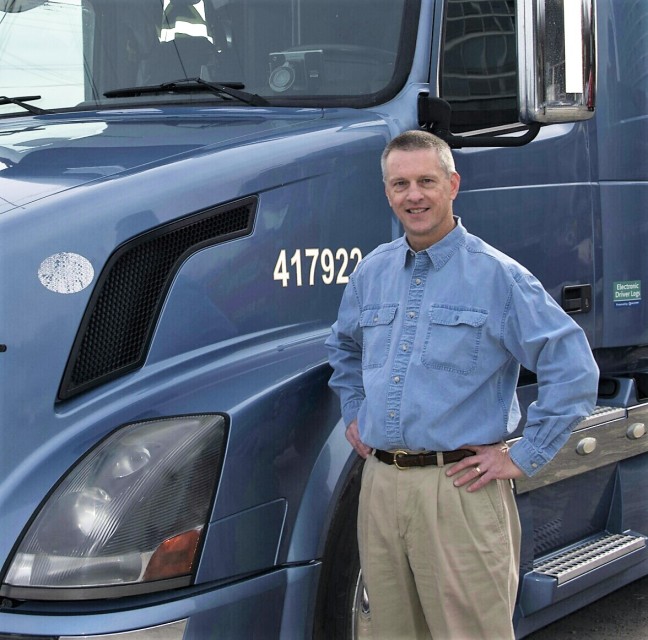Last month I installed a “poor man’s” lift axle. While it was more of a conceptual test than a budgetary constraint, the cost was very reasonable while providing incredible fuel savings.
The “poor man’s” lift required the purchase of two Velvac 320184 3-way Manual Push/Pull Valves to act as a suspension dump valve, one valve for each axle. While I had the truck in for service one day, I conveniently got underneath the trailer to plumb the air lines to the valves.
On my Utility dry van trailer, the airline runs from the air tank to the leveling valve then sequentially to the suspension air bags. I changed that by plumbing the air line from the leveling valve to a tee fitting, then to the supply side of each of the Velvac dump valves, and from there to its respective axle.
This arrangement provides two purposes. The first, pressing need, is to dump both axles, then secure the lifted axle in the lifted position, then reinflate just the grounded axle. In my operation, the forward axle is the lift axle while the rear remains grounded, especially since the leveling valve is mounted to the rear axle. This could be relocated to the front axle if your operation required relocating. The second benefit of isolating the axle dumps is to allow for tighter maneuvering in the event that I dump the air from the rear axle, thus shortening the effective trailer wheelbase allowing the trailer to pivot on the front axle’s wheels instead of the midpoint between the axles as is the normal condition.
To secure the axle in the up position, I initially tried using a 4-inch ratchet strap. This had several problems: the strap stretches, which allows the lifted axle to bounce on uneven pavement. Secondly, it is cumbersome to secure the strap on the slider box, wrap the strap underneath the axle, then back up to the slider box over a pulley, then aft to secure it through a ratchet. The impracticality and ineffectiveness of lifting the axle with the strap nearly nixed the test.
As a practical solution, fellow Landstar BCO Jim Fowler saved the concept by suggesting and providing two short lengths of Grade 5 securement chain with a chain come-along. One end of the chain hooked on the slider box rail while the other end is wrapped underneath the axle. The come-along hooks to the top section of the chain while the other end meets the chain near the axle. Tighten to secure in the up position.
To ensure the axle is lifted as much as possible against the airbag’s bump stops, with the air exhausted from both axles, I drive the front axle’s wheels up on a pair of short 2×4’s. When the lift axle is secured, I reinflate the rear axle and drive off the lumber. Viola! The axle is suspended.
At first, this lifted arrangement provided barely two inches of lift, which experience quickly proved insufficient to prevent tire scrubbing when bouncing over bridge abutments and deteriorating highways. Another Landstar BCO, Rodd Timmer, came to the rescue, suggesting a larger, 455/55R22.5 wide-based tire on the grounded axle while keeping the 445/50R22.5 tires on the lifted axle. This unconventional setup provided the necessary additional inch of lift.
As for the fuel economy gains, my first month of service showed 0.79 MPG gain (from 8.61 to 9.40 MPG) while running light loads or empty with the axle raised for 9,300 miles versus running light or empty with the axle lowered for 2,200 miles. Admittedly, this is still a brief test, but it’s incredible results are highly encouraging!
To determine the return on investment, one would have to consider how many miles could be lifted (i.e. 65% of the time average for me for the past 18 months). I shelled out $130 for both Velvac valves plus another $150 in DOT-approved ⅜” air tubing and various DOT-approved brass fittings for the valves and airbag inlets. In my operation, a lifted axle would yield $2,400 annual fuel savings based upon 0.79 MPG gain at today’s diesel fuel prices. This homemade test lift axle setup nearly paid for itself within the first month’s test period!
Other improvements that I will make is to upgrade my Hendrickson airbags to their new “ZMD” internally-baffled airbags that would help reduce the bounce that results from putting all the weight on just two airbags instead of four. I tried upgrading my shock absorbers from the 5+ year old OEM shocks for a pair of $82 Monroe Gas Magnums that failed to yield the desired bounce reduction; perhaps a better choice may be to upgrade to RoadKing shocks. I’ll wait to see if upgrading the shocks will be necessary once the new Hendrickson ZMD airbags are installed.
The other quantum leap was an even more recent upgrade from the fixed-length, angled trailer skirts to the state-of-the-art Windyne Flip & Slide skirt. This new skirt allows me to slide my trailer tandems aft while the skirt extends as the tandems move rearward. This moving of the tandems aft also reduced trailer bounce. I will write about these skirts in another blog. Until then, get a wheel up for fuel economy!
